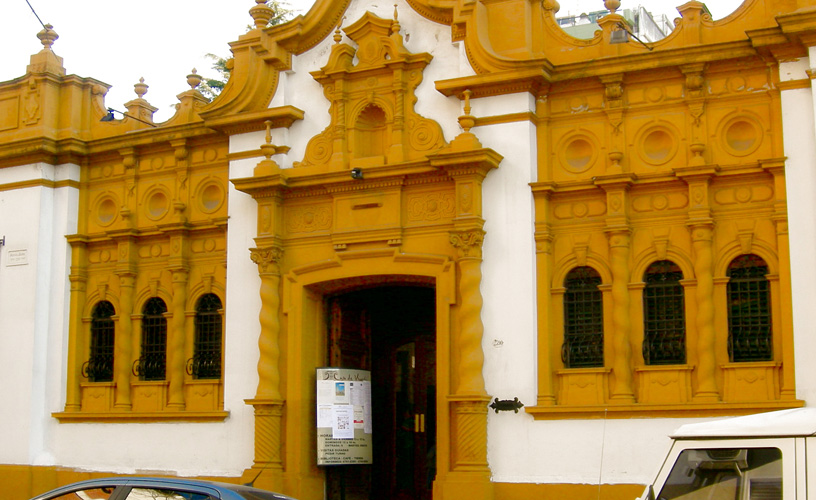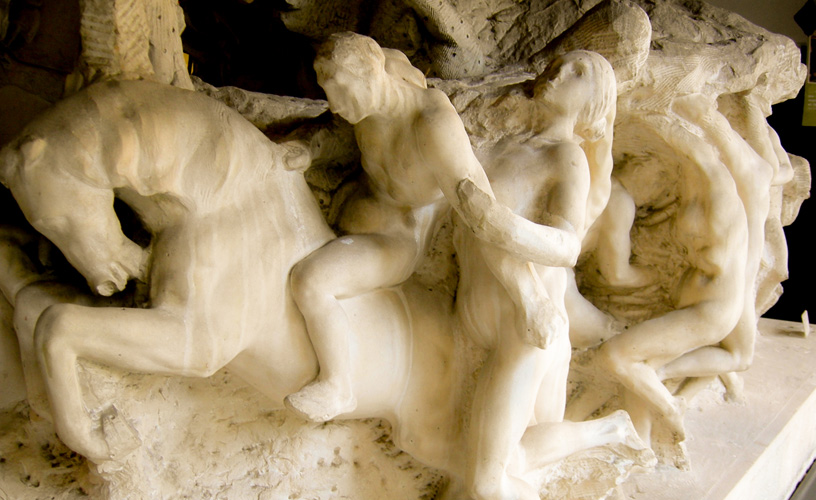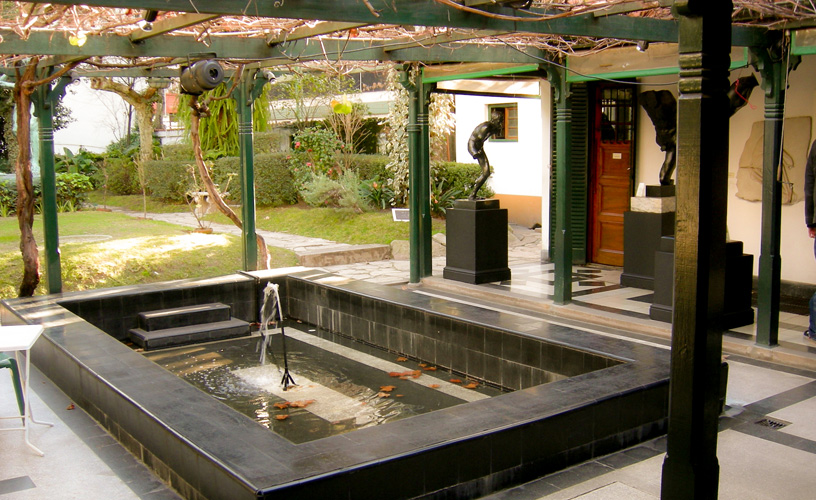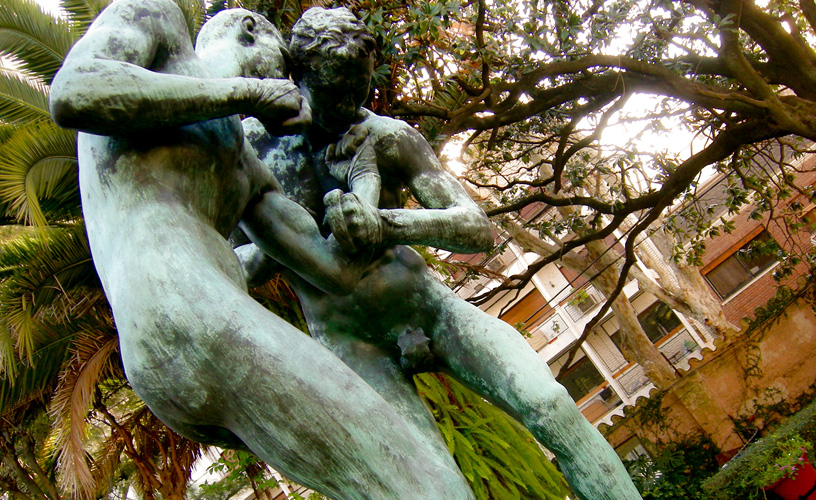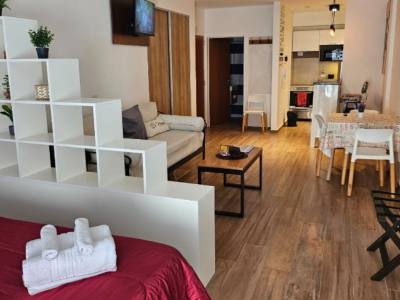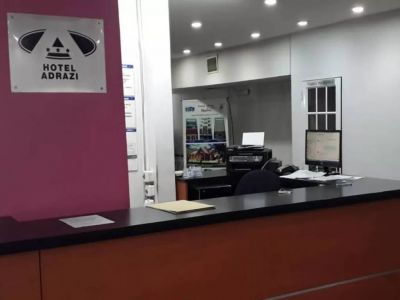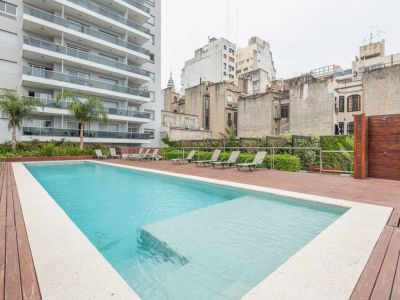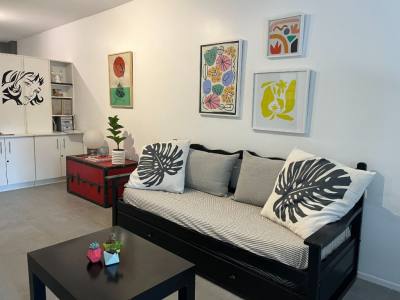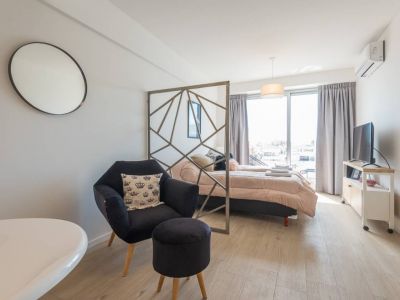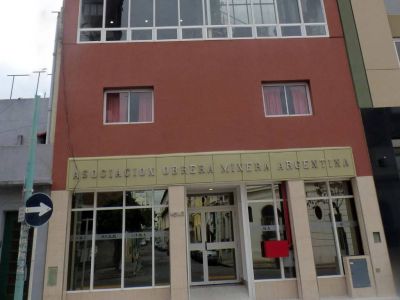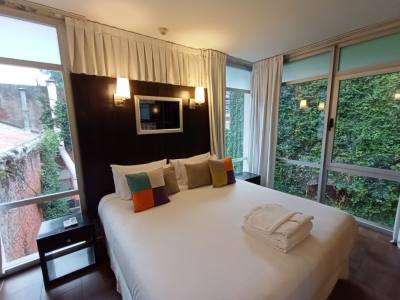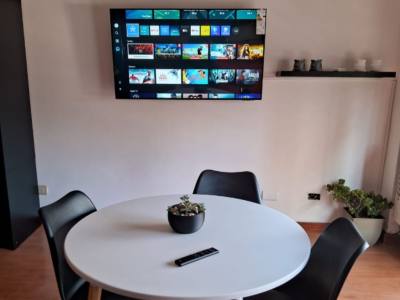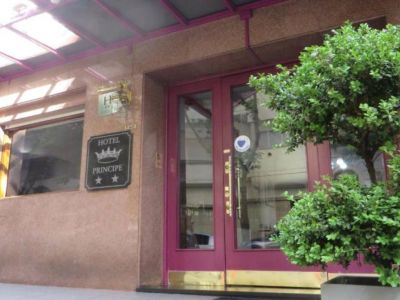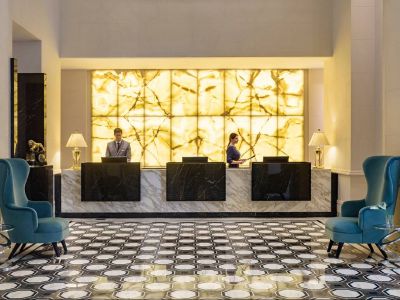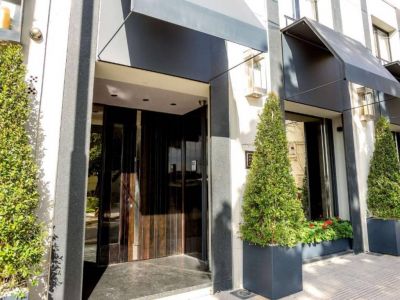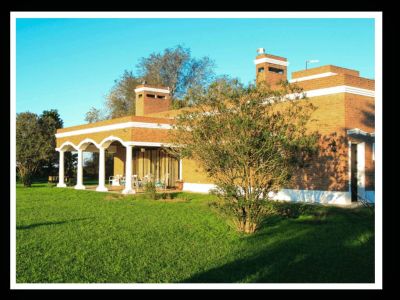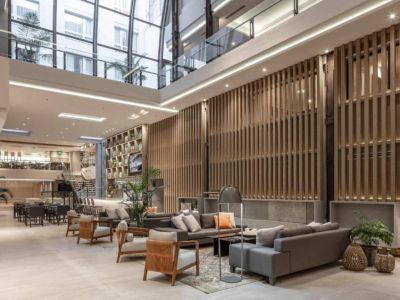On another corner of the neighborhood of Belgrano, in
Buenos Aires, we came across a beautiful house that shelters the past and work of Argentinian sculptor Rogelio Yrurtia.
From the moment we stood opposite the façade of what used to be the house of Rogelio Yrurtia, it was clear that we would not just visit a museum dedicated to the work of a sculptor.
What we had in front of us was almost two museums in one: on the one hand, a building that shelters sculptures and studies made by Yrurtia; and on the other hand, the building itself, a Neo-colonial construction with original furniture completely worth appreciating. The whole museum breathes in this atmosphere.
Spanish and Austere
No sooner had we crossed the amazing lintel with a clearly Spanish Baroque influence than we entered a space that may seem strange today. To begin with, this was the house where Rogelio Yrurtia and his family used to dwell. We had entered their privacy. Furthermore, the first thing we saw was a huge fragment of a sculpture which reproduces part of a human body and is much taller than any visitor.
Towards the end of his life, Yrurtia himself donated his house and everything contained in it so that it would be on display. Yrurtia’s house continues accomplishing that mission and not only does it approach the life and work of the sculptor (complementing what is shown in various signs), but also his family and friends, such as one of the first paintings by Pablo Picasso which Yrurtia bought in Spain and is displayed along with a copy of the letter Picasso sent to his “friend Yrurtia”.
Dark and Over-ornamented
One of the most amazing things for visitors is to get an idea of the way people lived in former times. Even though Yrurtia’s House may turn out to be impressive and very attractive, it does not give the impression of being either comfortable or intimate. House standards were different in the past.
For instance, as we watched the space once occupied by the dining-room, still preserved in the same condition as Yrurtia himself used to keep it (with the original furniture and ornaments, just like the rest of the museum), we discovered that its chairs were quite similar to dark narrow boards put together in a very rigid angle. They used to eat there everyday. This, of course, shows that in the old days lifestyle was measured considering different parameters.
We were astonished to see the impressive wooden almost black staircase that leads to the second floor, which we were not allowed to visit. Everything in the house has a strong Spanish imprint, with countless details worth discovering.
Monumental and Allegorical
Quite apart and distributed among the refurbished spaces in the house, we could see works and studies made by Yrurtia himself, everything from giant sculptures that occupy practically one room up to fragments of hands or busts.
Rogelio Yrurtia’s outstanding sculptures are very well known among the Argentinian people, probably in an unaware fashion. Some examples of his works are the Bernardino Rivadavia Monument located in the center of Miserere Square (in Once), the sculptural group “Canto al trabajo” (Chant to Labor), located in front of the University of Buenos Aires’ Engineering College Building on the corner of Paseo Colón Avenue and Independencia Avenue, and the Manuel Dorrego Monument, on the corner of Viamonte and Suipacha Streets.
Even for those who do not consider themselves admirers of Rogelio Yrurtia’s sculptures, this museum has much to offer.
Marcos Rodríguez
Marcos Rodríguez
